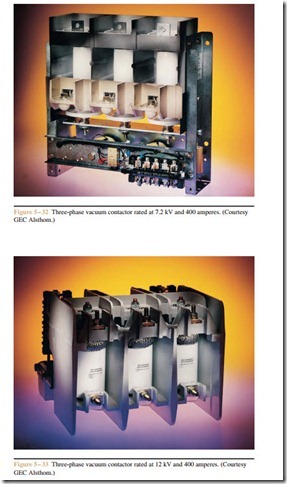Mercury Relays
Mercury relays employ the used of mercury-wetted contacts instead of mechanical contacts. Mercury relays contain one stationary contact, called the electrode. The electrode is located inside the electrode chamber. When the coil is energized, a magnetic sleeve is pulled down inside a pool of liquid mercury, causing the mercury to rise in the chamber and make connection with the stationary electrode (Figure 5 – 36). The advantage of mercury relays is that each time the relay is used the contact is renewed, eliminating burning and
pitting caused by an arc when connection is made or broken. The disadvantage of mercury relays is that they contain mercury. Mercury is a toxic substance that has been shown to cause damage to the nervous system and kidneys. Mercury is banned in some European countries.
Mercury relays must be mounted vertically instead of horizontally. They are available in single-pole, double-pole, and three-pole configurations. A single- pole mercury relay is shown in Figure 5 – 37.

